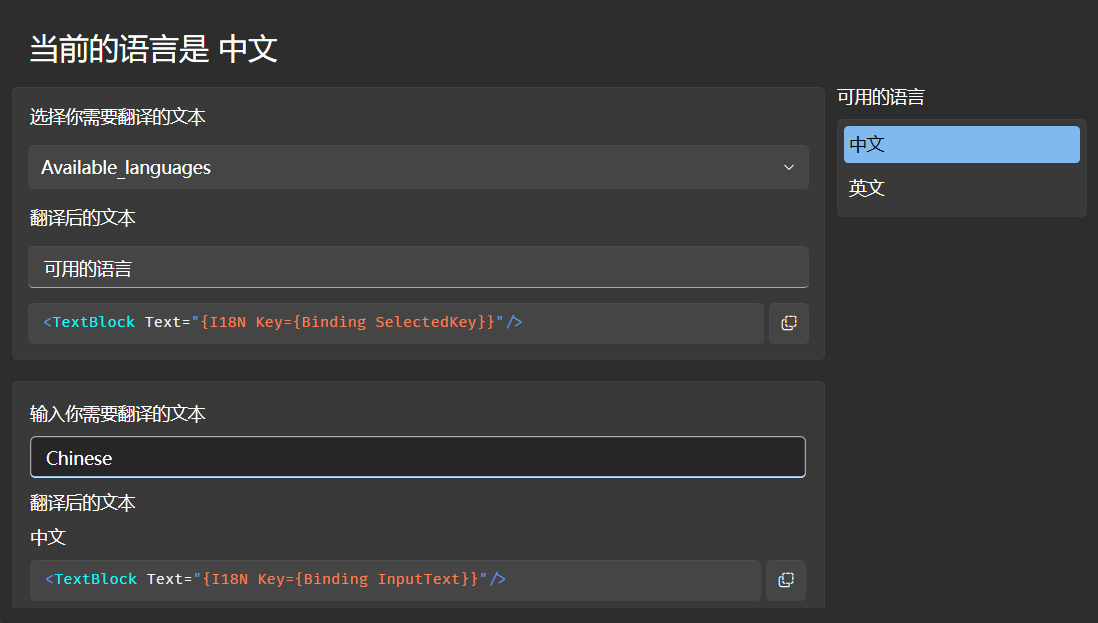🇬🇧 English
当你在项目中使用.resx文件作为语言文件时,你可以使用Antelcat.I18N.Attributes.ResourceKeysOfAttribute来自动生成资源键:
using Antelcat.I18N.Attributes;
namespace MyProject
//Auto generated class should be partial
[ResourceKeysOf(typeof(My.Resource.Designer.Type))]
public partial class LangKeys
{
}然后在你的.xaml文件中使用x:Static来为你的控件提供资源键
如果你已经在你的.resx文件中有
<data name="Language" xml:space="preserve">
<value>语言</value>
</data>你可以像这样使用:
<TextBolck Text="{x:Static myProject:LangKeys.Language}"/>然后你可以使用这个键来绑定语言源
<TextBlock Text="{I18N {x:Static myProject:LangKeys.Language}}"/>当你想要改变语言时,只需要调用
using System.Windows;
I18NExtension.Culture = new CultureInfo("language code");你可以看到文本在语言之间变化。
有时你的源文本并不是在你的应用程序中定义的,而是从其他来源(如网络)接收到的,你可以使用I18N直接绑定文本。
如果你收到了一个像这样的json:
{
"message": "This is a message"
}并且你已经在.resx中将他翻译成了另一种语言
<data name="This is a message" xml:space="preserve">
<value>这是一条消息</value>
</data>你肯定会设计一个ViewModel并且将他设置到属性Message中,你可以像这样绑定:
<!--他的DataContext就是你的ViewModel-->
<TextBlock Text="{I18N {Binding Message}}"/> 每当Message属性被改变或者语言源被改变时,文本都会自动更新。
有些情况下,你需要将多个文本组合起来,或者对文本进行格式化,你可以使用I18N和LanguageBinding来实现。
如果你已经有了如下翻译的.resx文件:
<data name="Current_is" xml:space="preserve">
<value>当前的 {0} 是 {1}</value>
</data>
<data name="Language" xml:space="preserve">
<value>语言</value>
</data>
<data name="Chinese" xml:space="preserve">
<value>中文</value>
</data>并且在.xaml中
<TextBlock>
<TextBlock.Text>
<I18N Key="{x:Static myProject:LangKeys.Current_is}">
<LanguageBinding Key="{x:Static myProject:LangKeys.Language}"/>
<Binding Path="Language"/> <!--source text from view model-->
</I18N>
</TextBlock.Text>
</TextBlock>此时 I18N.Key 是字符串的模板,其中的 LanguageBinding 和 Binding 会提供模板的参数,他们会被按顺序格式化成最终的文本。同时保持整体的响应性。





